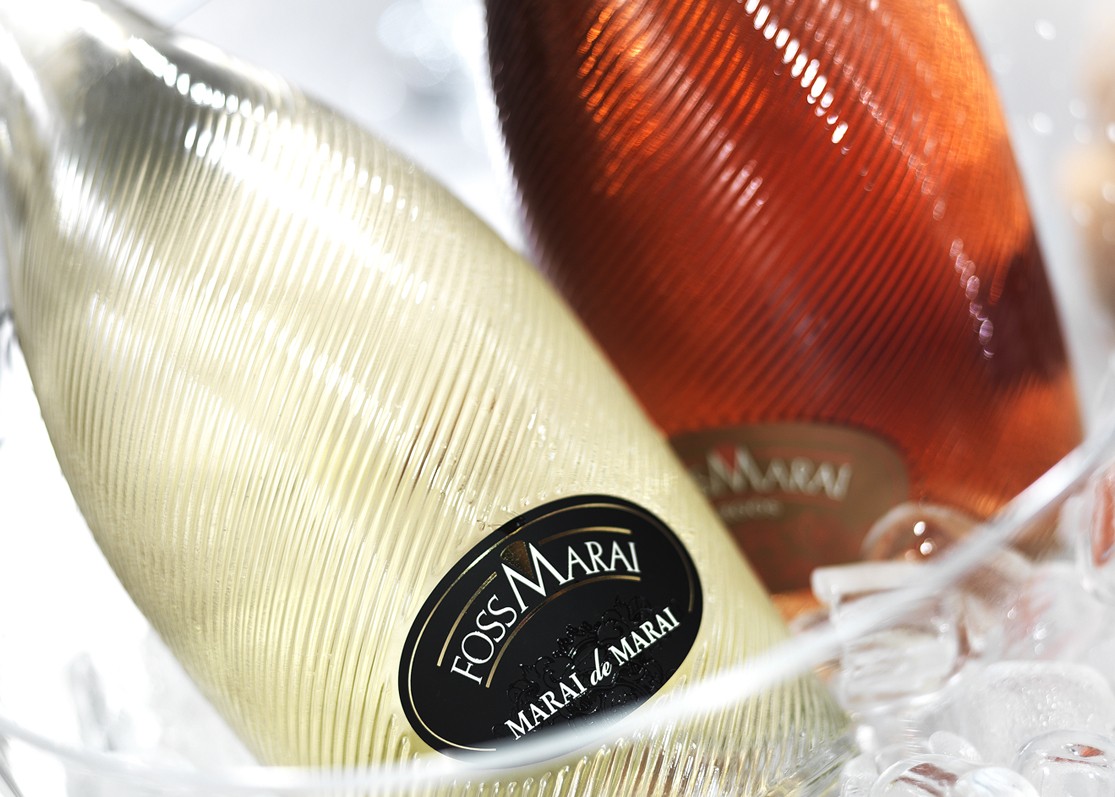Sparkling wine differences: Brut or Extra Dry?
Mini guide for non-professionals

Everybody loves to uncork a bottle of fine Italian wine, but few people know the (substantial!) differences between a Brut and a Dry spumante, let alone its fermentation method.
In order to help you choosing the right spumante, Foss Marai created a mini guide with all the basic information.
Foss Marai and the Charmat method
Let’s start with the sparkling wine production: according to the ‘Martinotti method’, developed in 1985 by Federico Martinotti, after a first fermentation the wine is mixed in a stainless steel pressure tank where sugar and yeasts are added to activate the secondary fermentation. Spumante is then ready to be bottled. In fifteen years, this method will be improved and patented by the French Eugène Charmat and it has become internationally known as Charmat method ever since. Foss Marai uses this method for all its sparkling wines.
The secondary fermentation in large pressurised stainless-steel tanks gives our Valdobbiadene D.O.C.G. a fresh fruit character. Compared to the Classic method, in fact, the Charmat technique better preserves the freshness and intensity of the grapes’ aromas, rather than covering them up with autolytic complexity. The bubbling finesse and persistence of our Valdobbiadene D.O.C.G. are the result of an extremely careful wine making production process and selection of local yeasts.
Sparkling wine residual sugar
Another important difference among sparkling wines is their residual sugar: the Dry spumante - such as Nadin and Cartizze - is well rounded, not too sweet wine, with a residual sugar between 17 and 32 g.l. It is best served with rich and aromatic dishes, such as fois-gras or blue-veined cheese. For those who don’t like overly sweet wines, the Dry spumante is excellent with fruit and desserts.
Extra Dry Spumante: ideal for an aperitif and shellfish-based dishes
The Extra Dry spumante - such as Strada di Guia 109 Extra Dry and Marai de Marai Extra Dry is a soft sparkling wine with a residual sugar between 12 and 17 g.l. Despite its name, the Extra Dry spumante is sweet but balanced by its grape acidity, which makes it perfect to be served with delicate fish, white meat and cream cheese. Excellent with shellfish-based dishes.
Brut spumante: ideal for risotto dishes, white meat and fish
The Brut spumante, like our Guia Millesimato, Marai de Marai Brut or Roös, has a residual sugar between 6 and 12 g.l., with an intense, acidic, fruity flavour. Beside being a great choice for an aperitif, its full-bodied, dry taste makes it ideal for appetizers, risotto dishes, white meat and fish.
If you still have doubts about which one is the best spumante for your celebrations, we suggest you try them all..


